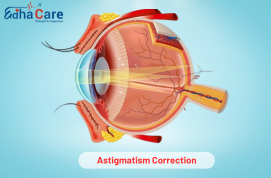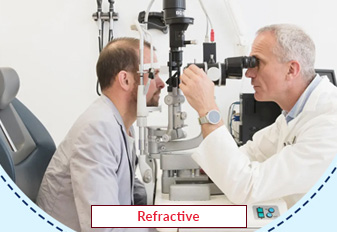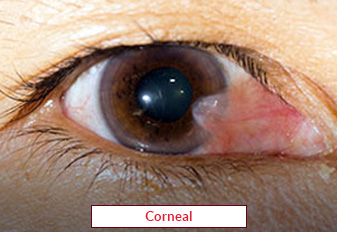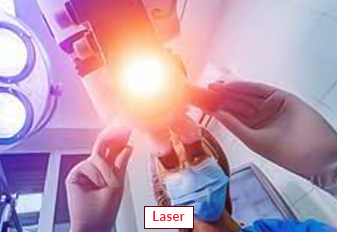Astigmatism Correction

Astigmatism correction includes multiple techniques to address refractive mistakes caused by differently shaped corneas or lenses. Common methods involve refractive surgery like Laser or PRK, toric lenses for contact lenses, and prescription glasses with specially made lenses. Clear vision is achieved by correcting the abnormal curvature of the lens of the eye with eyeglasses and contact lenses, while astigmatism is permanently corrected by refractive procedure, which permanently reshapes the cornea. Through the improvement of visual acuity and the decrease of astigmatism-related symptoms such as eye strain, headaches, and blurred vision, these medications hope to improve people's overall eye well-being and quality of vision.
Book an AppointmentAbout Astigmatism Correction
Symptoms: Distorted or blurred vision, headaches, strain on the eyes, and trouble seeing objects clearly at different distances are all common signs and symptoms of astigmatism.
Causes: Astigmatism develops when a cornea or lens is not smoothly curved like a basketball, but rather has an uneven shape. Vision that is blurred or distorted is the result of light beams focusing irregularly on the retina due to this abnormality.
Solutions: Prescription eyeglasses or lenses for contact lenses, which correct for astigmatism by compensating for the abnormal curvature of the eye, can help improve vision. Refractive surgery, like LASIK or PRK, permanently corrects astigmatism by restructuring the cornea, which lessens the need for corrective lenses. periodic eye examinations are also necessary to track astigmatism and make sure the right corrections are put in position.
Procedure of Astigmatism Correction
Preoperative Evaluation: The patient has a thorough eye exam to determine the kind and degree of astigmatism as well as the overall health of their eyes.
Choice of Correction Method: The ophthalmologist suggests the best correction technique, such as contact lenses, glasses, or refractive surgery, based on the evaluation findings and the patient's preferences.
Measurement and Prescription: To ascertain the proper prescription for corrective lenses or to direct surgical planning, exact measurements of the eye's curvature and refractive error are obtained.
Fitting of Correction Devices: If the patient wears contacts or glasses, the corrective lenses are adjusted according to their comfort level and prescription.
Preparation for Refractive Surgery: Should the patient elect to have refractive surgery, more examinations and tests are performed to determine eligibility and design the surgical strategy.
Surgical Process: In refractive surgery (e.g., LASIK, PRK), the cornea is reshaped by the surgeon using cutting-edge laser technology, which corrects the irregular curvature and consequent astigmatism.
Postoperative Care: The patient is given advice on how to take care of themselves following surgery or after acquiring corrective lenses. To guarantee the best possible visual results and track the healing process, follow-up sessions are planned on a regular basis.
Require Assistance?
Get A Quick Callback From Our Healthcare Experts






